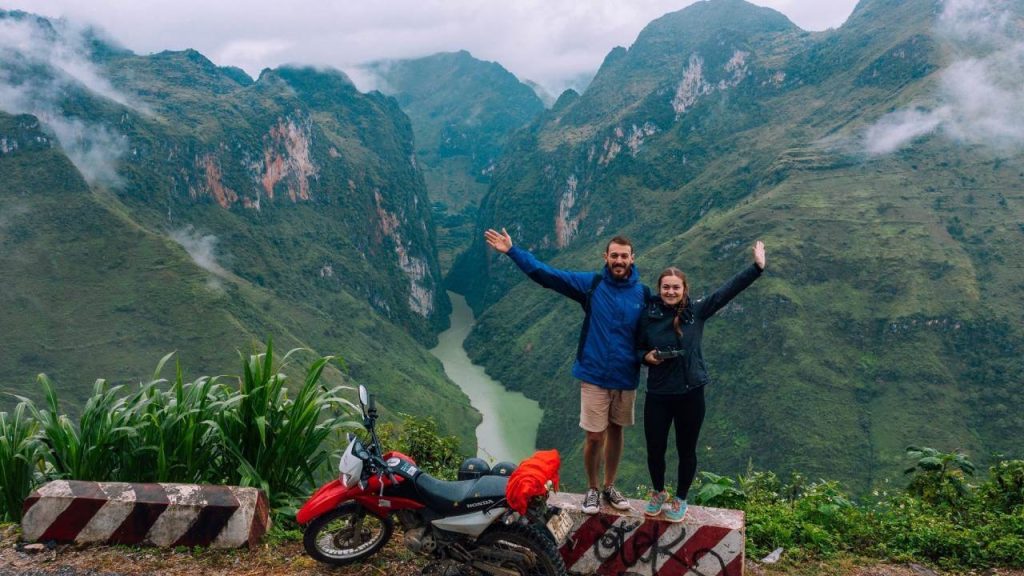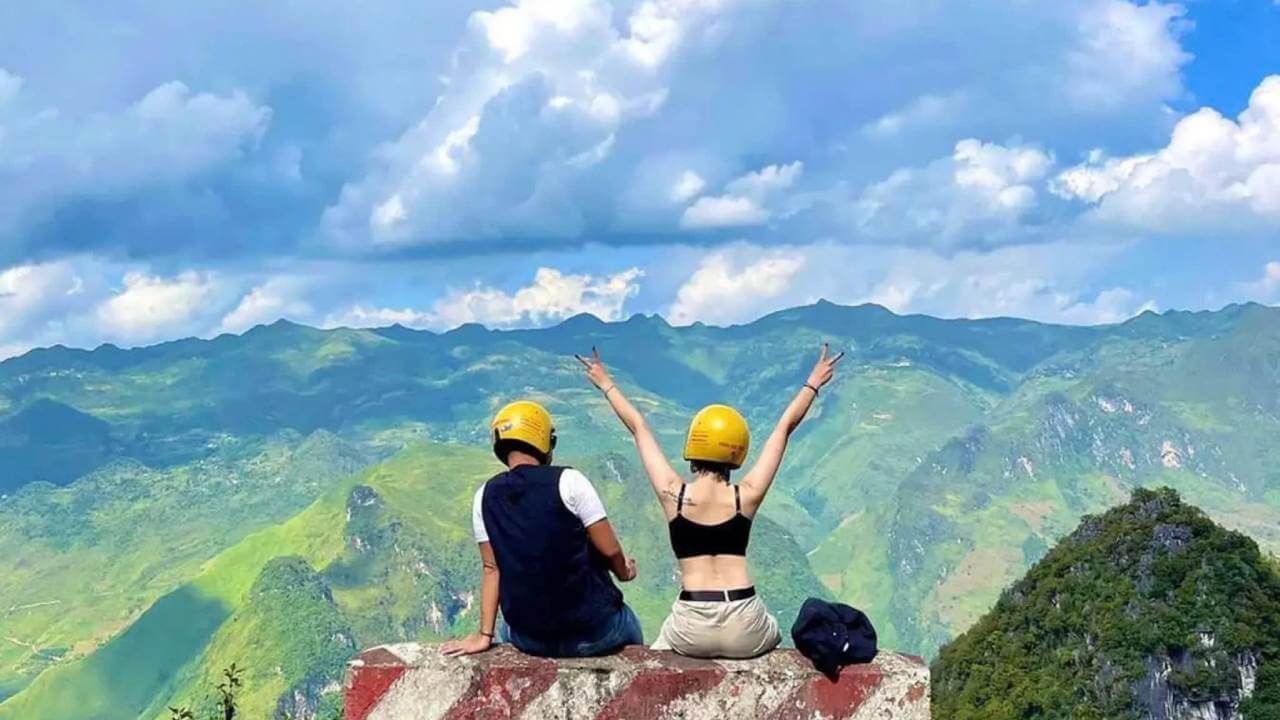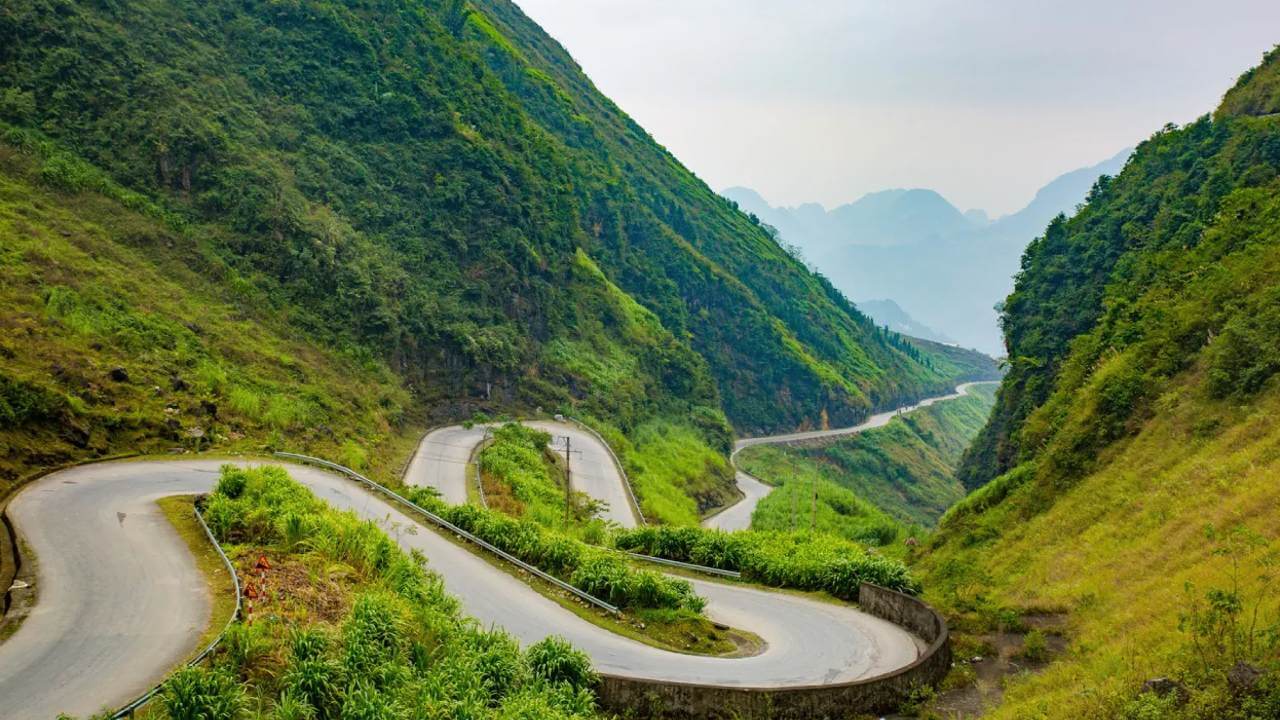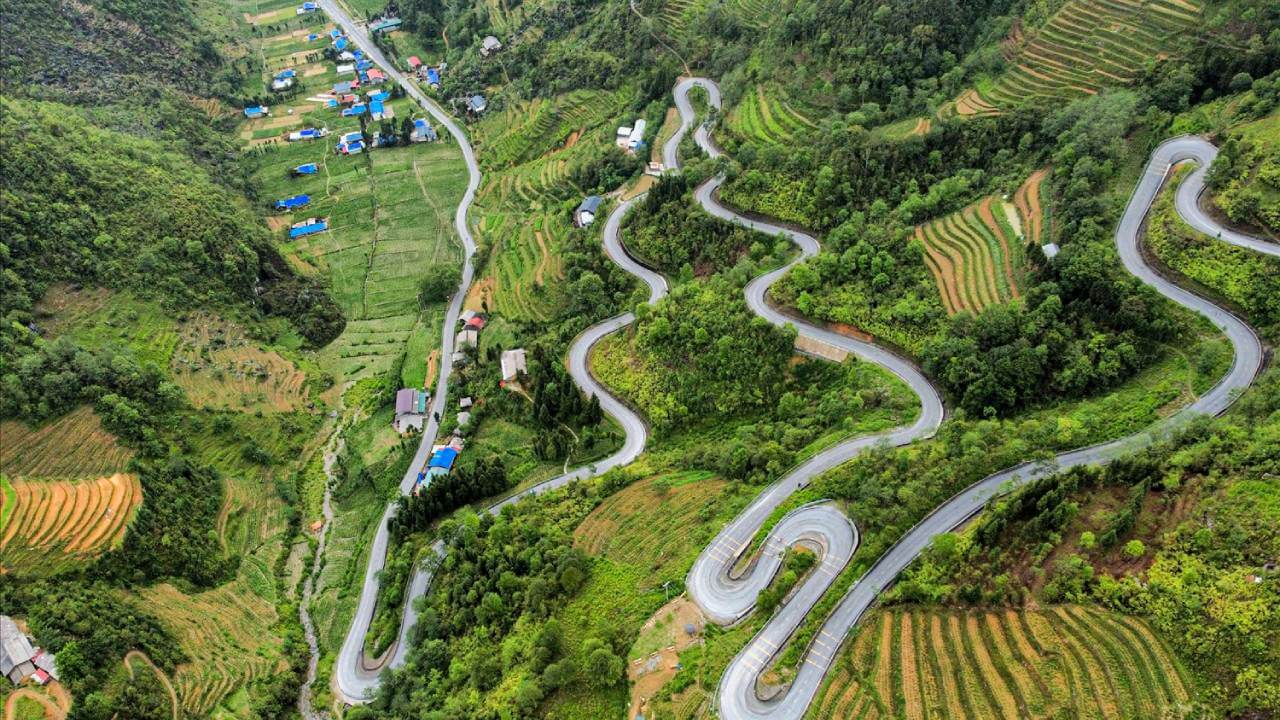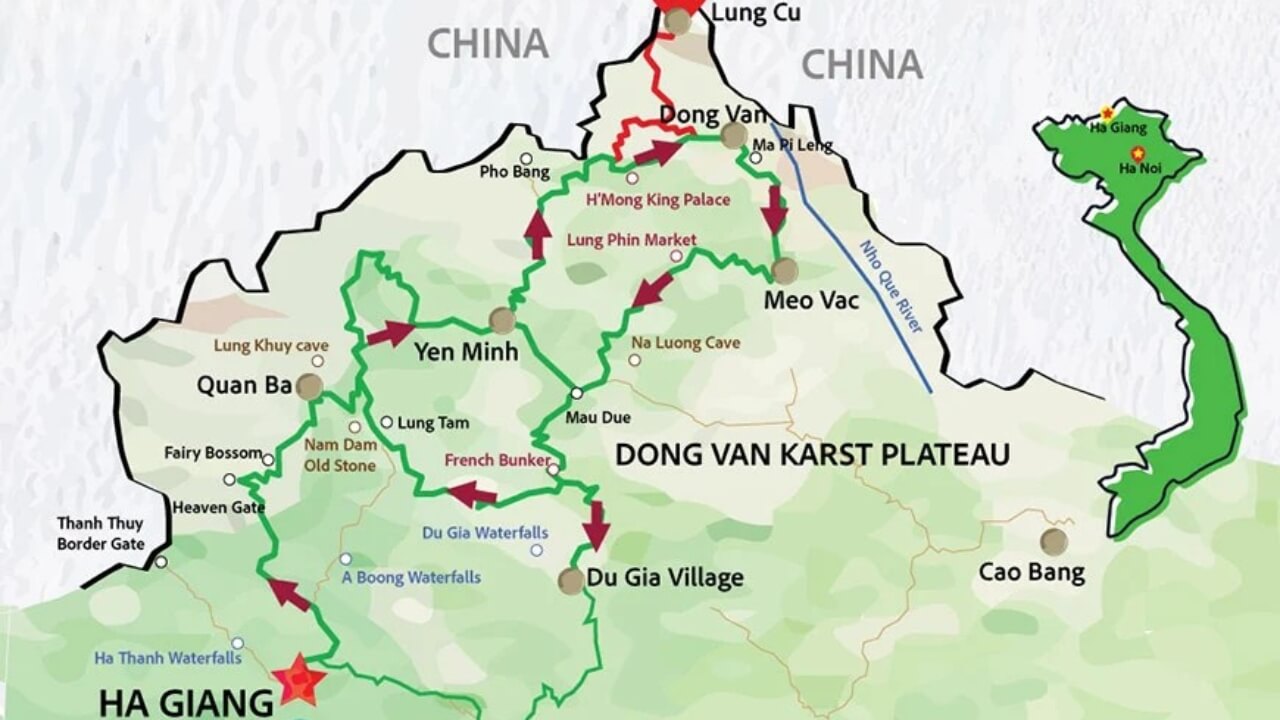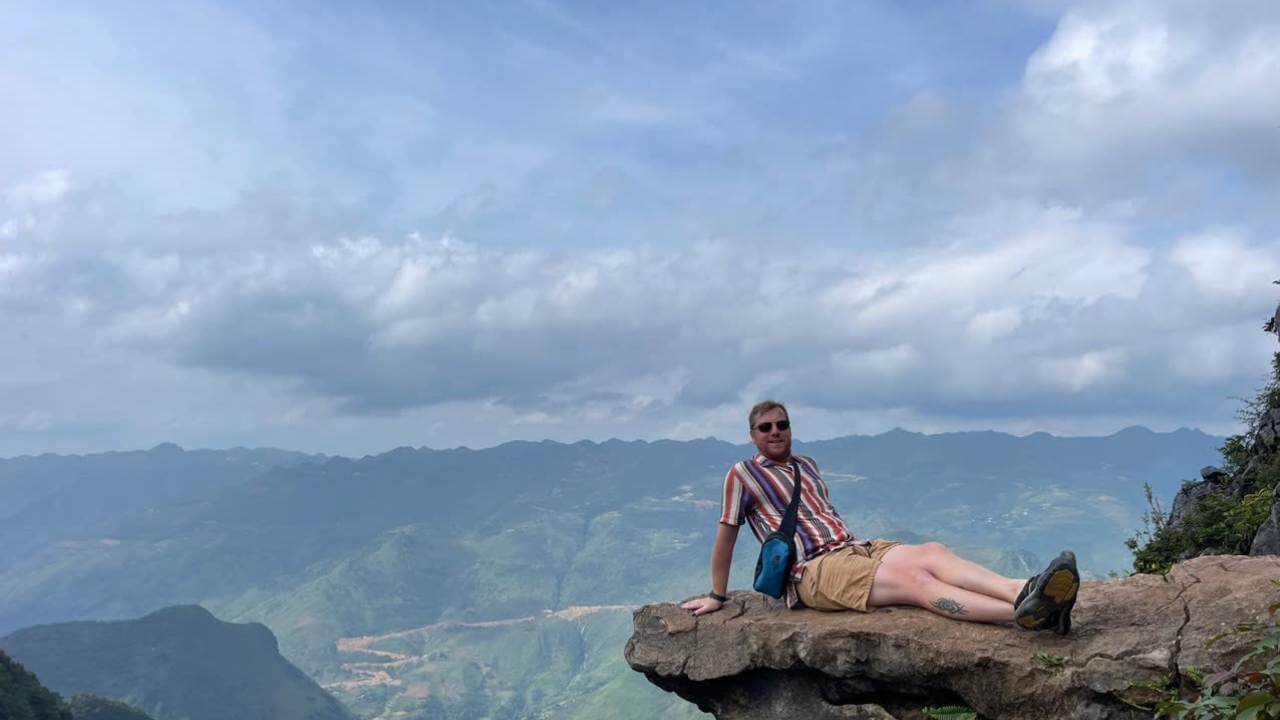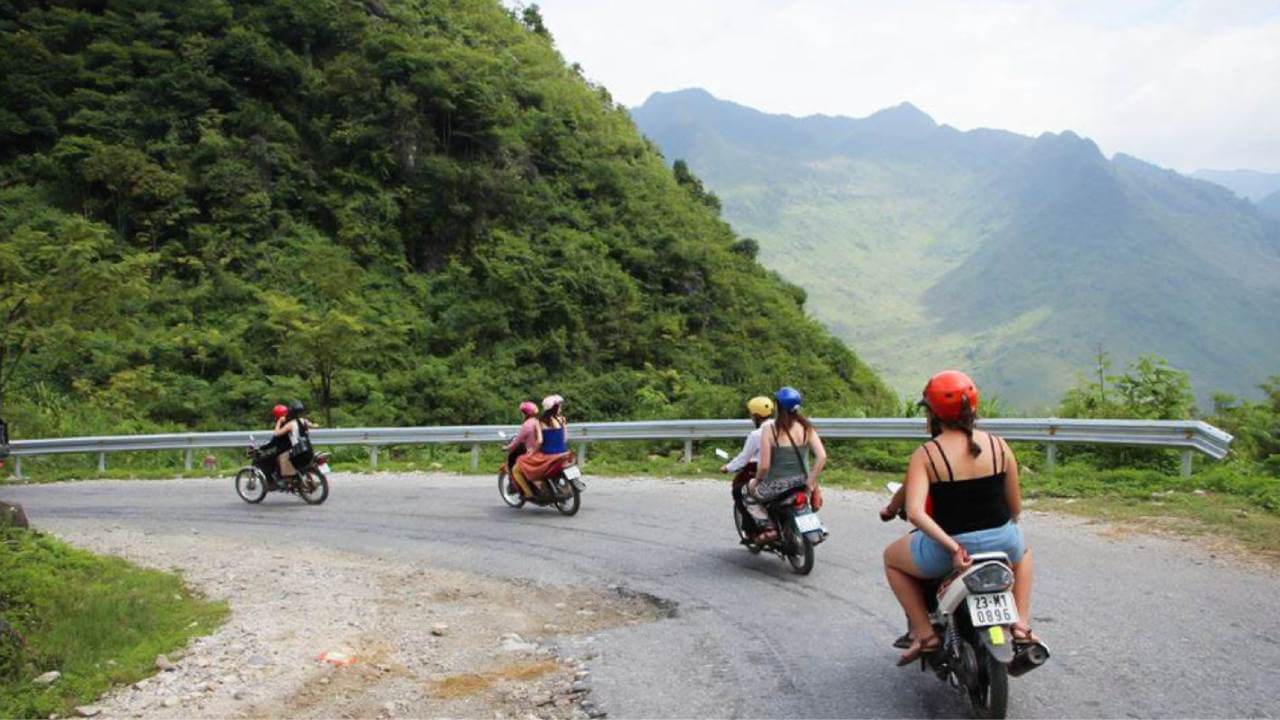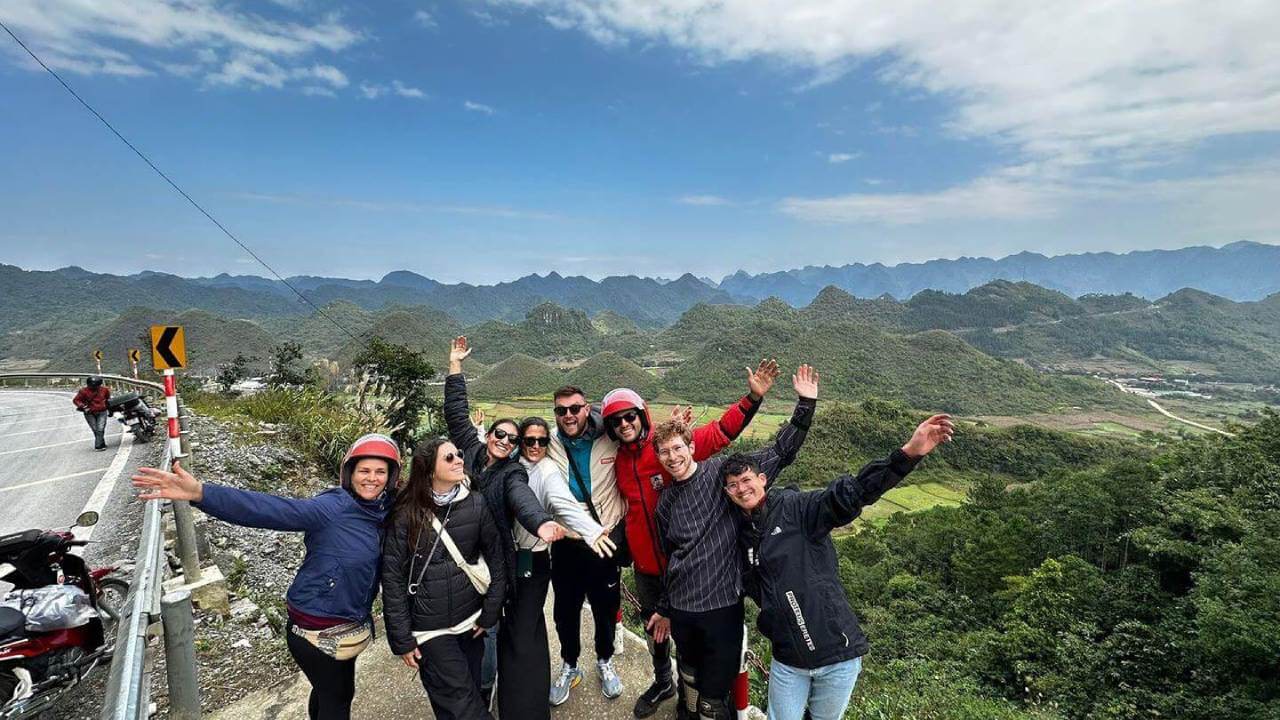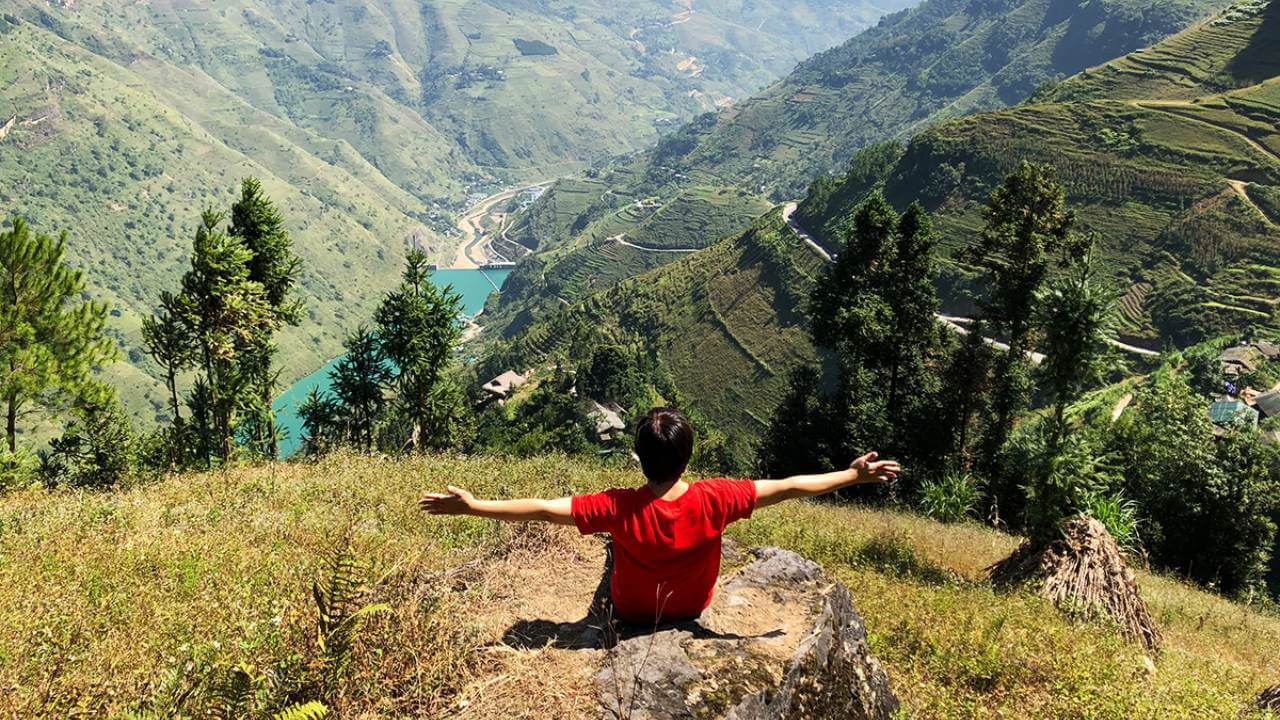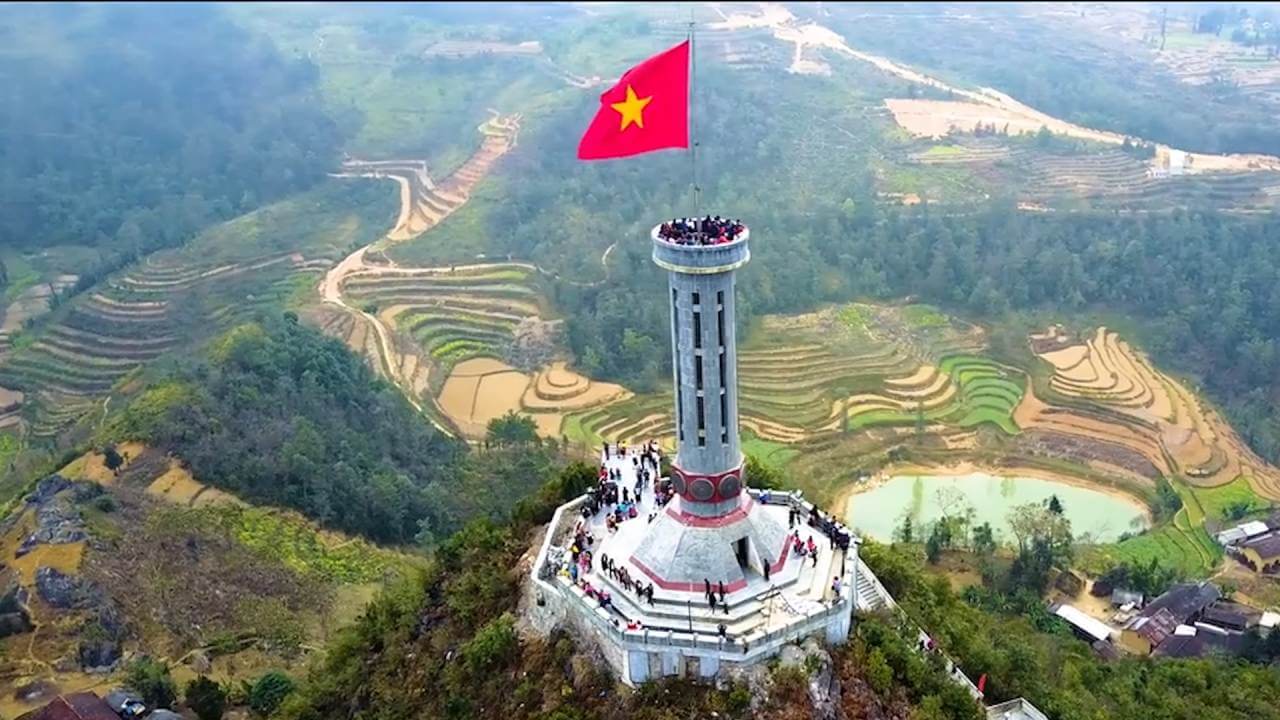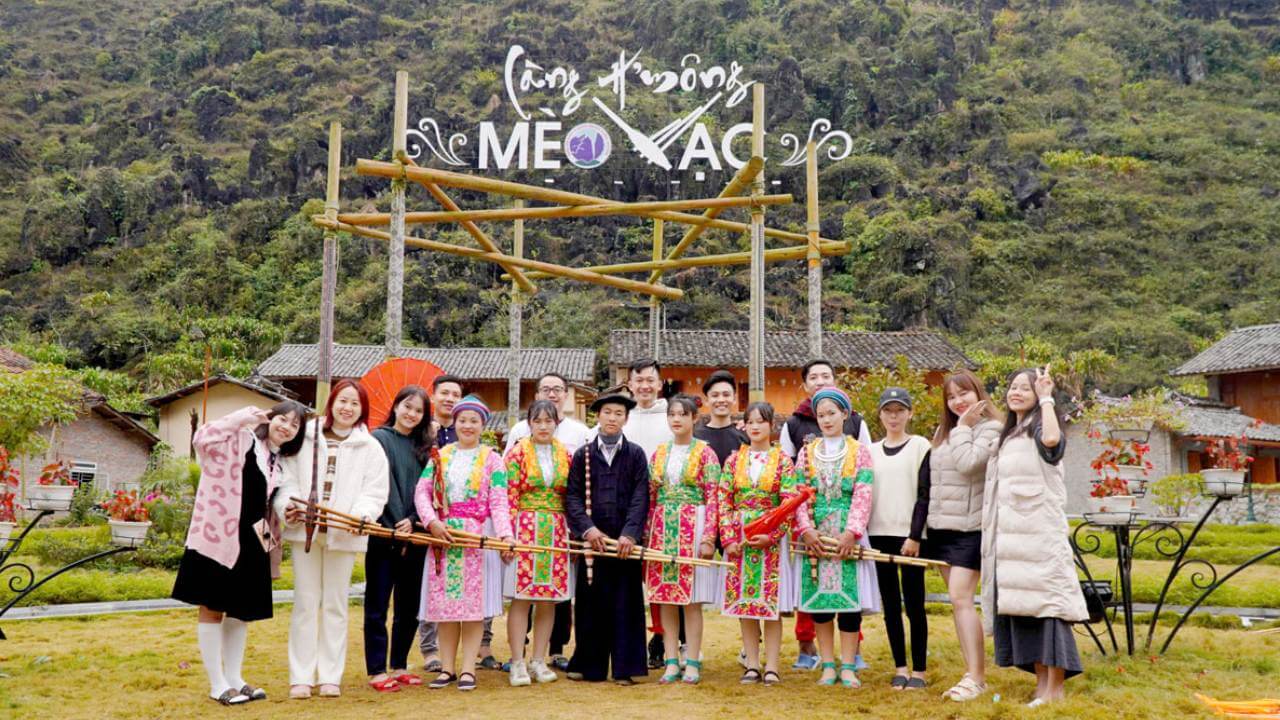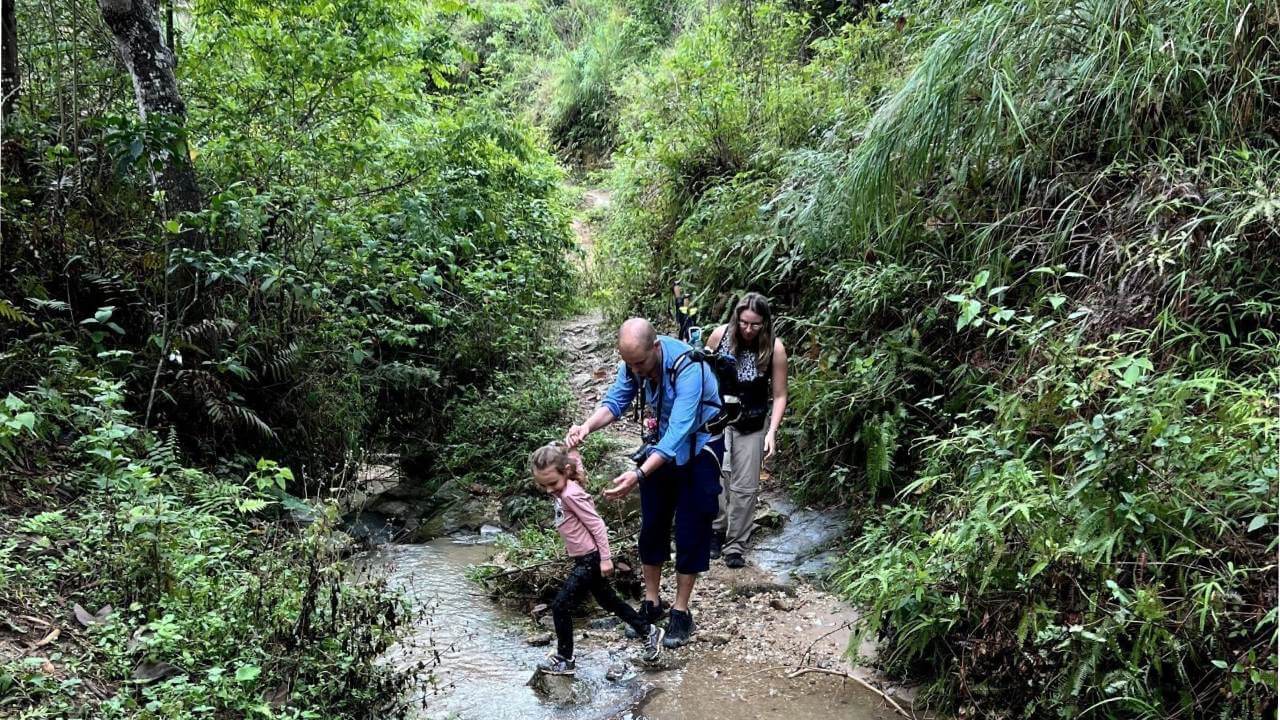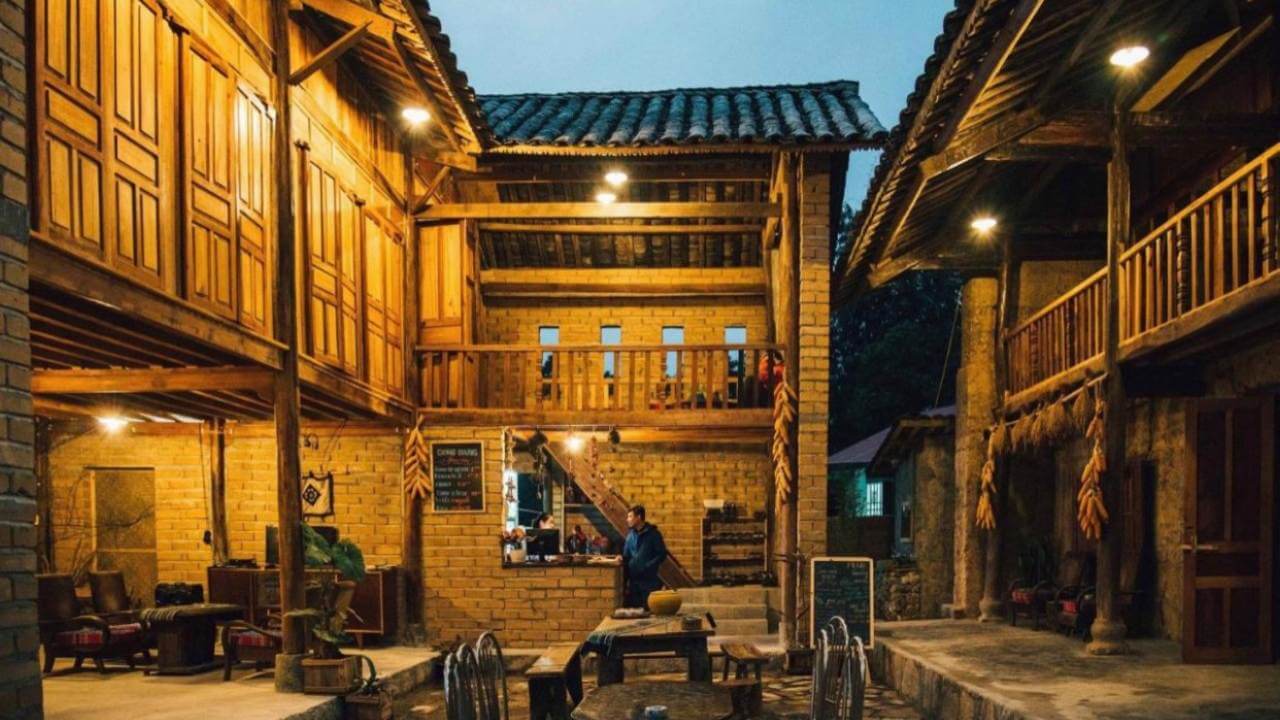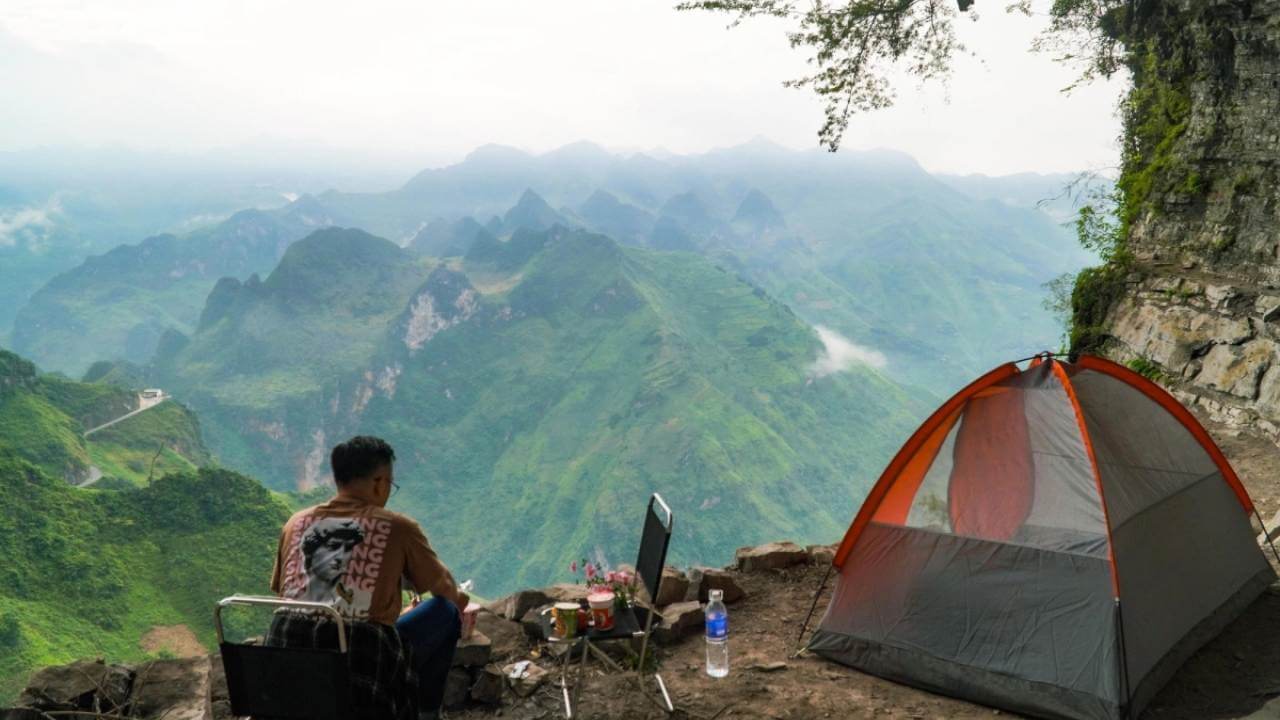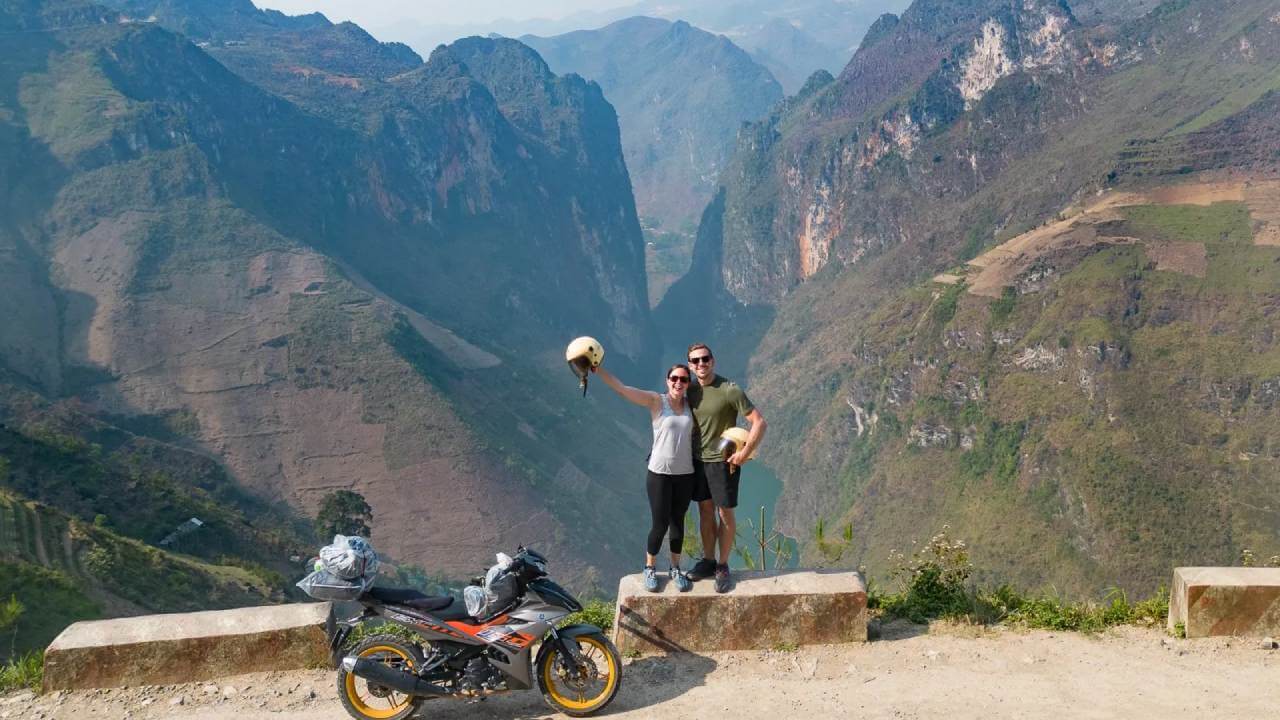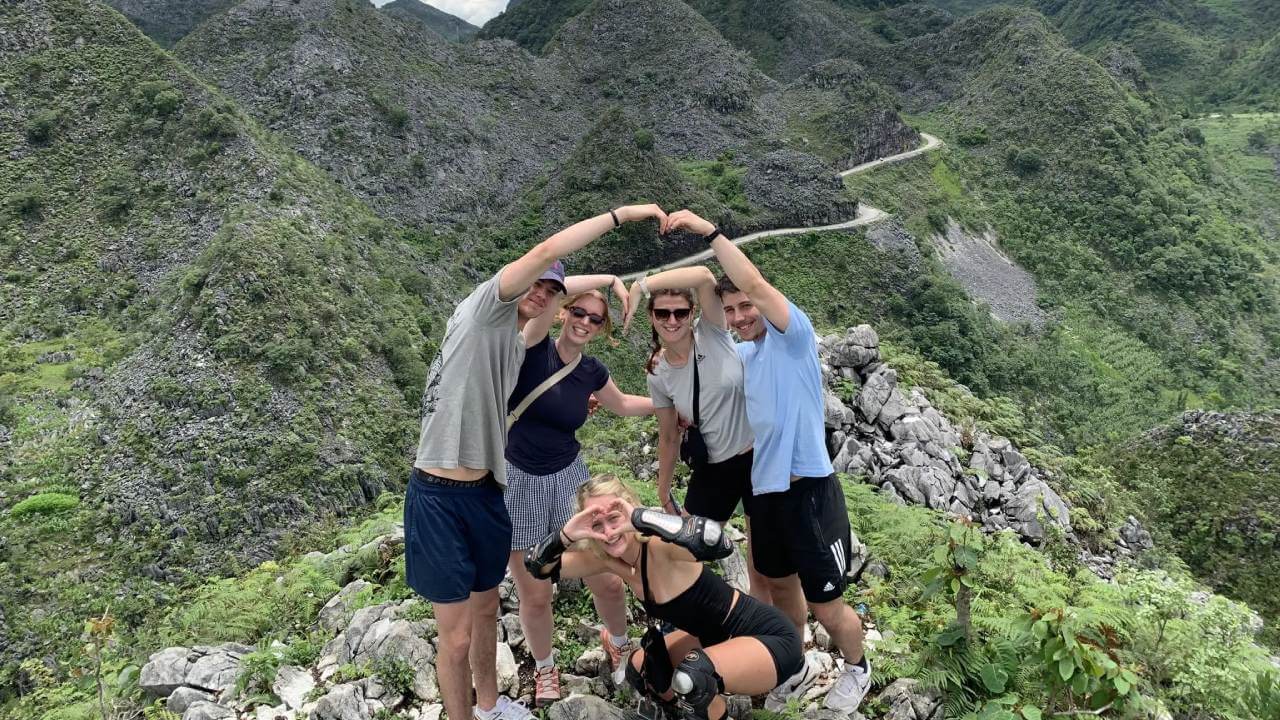Hanoi Travel Blog - Hanoi Introduction & Information
Discover Ha Giang Loop: Your Ultimate Guide to Unforgettable North Vietnam Tour 2025-2026
Why Ha Giang Loop Should Be on Your Bucket List in 2025-2026
Nestled in the northernmost part of Vietnam, Ha Giang is a region of natural wonders, cultural richness, and rugged beauty. One of the best ways to explore this spectacular region is by completing the Ha Giang Loop, a 350-kilometer adventure that takes you through winding roads, towering mountains, breathtaking valleys, and remote ethnic villages. As one of the least commercialized regions in Vietnam, Ha Giang offers an authentic and immersive experience far away from the usual tourist crowds.
The Ha Giang Loop is becoming increasingly popular with travelers who seek the thrill of motorbiking along one of Vietnam’s most challenging yet rewarding roads. The journey is filled with stunning views, encounters with local ethnic minorities, and an exploration of nature’s most beautiful landscapes. Whether you’re an adventure seeker, a photography enthusiast, or someone wanting to experience Vietnam’s cultural diversity, Ha Giang Loop offers something for everyone.
In this comprehensive guide, we’ll take you through everything you need to know before embarking on this incredible journey – from the Ha Giang Loop map, the best times to visit, how to travel from Hanoi to Ha Giang, and what to expect along the way. Let’s dive into why Ha Giang Loop is a must-visit destination for your next Vietnam adventure.
What is the Ha Giang Loop?
The Ha Giang Loop is a picturesque 350-kilometer journey through the remote regions of northern Vietnam, beginning and ending in Ha Giang City. It’s a loop that takes travelers on an unforgettable route through rugged mountain landscapes, traditional villages, and some of the most stunning natural scenery Vietnam has to offer.
The loop includes several key towns, including Yen Minh, Quan Ba, Dong Van, Meo Vac, and Ha Giang City, with each stop offering its own unique charm.
This is no easy route, as it involves narrow, winding mountain roads that can be both exhilarating and challenging to navigate. However, the stunning views and remote destinations make it worth the effort. Travelers who take on the Ha Giang Loop will witness towering limestone peaks, lush valleys, colorful flower fields, and steep mountain passes that have made this route famous among adventure lovers and motorbike enthusiasts.
Why Should Choose Ha Giang Loop?
- The Ha Giang Loop offers some of the most dramatic and breathtaking landscapes in Vietnam. The sweeping views of the Nho Que River, Ma Pi Leng Pass, and the Dong Van Karst Plateau make it one of the country’s top travel destinations.
- Along the way, you’ll visit villages where various ethnic minorities such as the H’mong, Tay, and Dao still live in traditional houses and follow ancient customs. The warm hospitality and authenticity of these communities provide a deep cultural experience.
- The challenge of navigating the winding mountain roads, conquering the Ma Pi Leng Pass, and exploring remote villages is an adrenaline rush for motorbikers and trekkers alike.
- Compared to other popular tourist spots in Vietnam, Ha Giang remains largely untouched by mass tourism. Visitors can enjoy peace and solitude while being surrounded by nature’s raw beauty.
Ha Giang Loop Map – Your Road to Discovery
A Ha Giang Loop map is your essential companion when exploring this beautiful but remote part of Vietnam. The loop takes you through multiple towns and villages, and each offers different attractions and scenic stops. Here’s an overview of the route:
Ha Giang Loop Route Map
- Ha Giang to Yen Minh (70 km):
This section of the loop takes you through lush valleys and towering mountains. You’ll pass through the famous “Heaven’s Gate” in Quan Ba, where you’ll witness beautiful twin mountains that are a sight to behold. - Yen Minh to Quan Ba (30 km):
The road here offers views of the famous Quan Ba Twin Mountains. It’s a fairly easy stretch with fewer challenges than the later parts of the loop, but it offers plenty of opportunities for photos and a peaceful start to the journey. - Quan Ba to Dong Van (90 km):
This stretch is one of the most scenic parts of the loop. The road is winding and narrow, but the scenery is beyond breathtaking. You’ll pass through Dong Van Karst Plateau and eventually reach the old quarter of Dong Van, which offers glimpses into the history of the region. - Dong Van to Meo Vac (20 km):
The road between Dong Van and Meo Vac is steep and winding, with the iconic Ma Pi Leng Pass being the highlight. Known for its jaw-dropping views, Ma Pi Leng Pass is one of the most photographed spots along the loop. - Meo Vac back to Ha Giang City (80 km):
The final stretch of the loop is another 80 kilometers that brings you back to Ha Giang City. It’s an opportunity to reflect on your journey and take in the last moments of Ha Giang’s natural beauty.
Best Time to Visit Ha Giang Loop
The best time to visit the Ha Giang Loop depends on the kind of experience you are seeking. Weather in the region varies, and the route offers different scenic opportunities depending on the season.
March to April (Flower Season):
If you’re visiting to witness Ha Giang’s famous flower fields, March and April are the best months. The peach and plum blossoms cover the mountain sides, and mustard flowers paint the landscape yellow, creating a picture-perfect setting for photos.
October to November (Autumn):
During the fall, the air is crisp and cool, and the rice terraces in Hoang Su Phi are lush and vibrant. This is the time when the fields are most beautiful, especially with the rice harvesting season.
May to September (Summer):
Though the summer months are warmer, they also bring the monsoon season, meaning there is a higher chance of rain. This can make traveling more challenging, as roads may become slippery and difficult to navigate.
For optimal conditions – pleasant temperatures and clear skies – the months of October to March are the best times to explore the loop.
Hanoi to Ha Giang – The Starting Point of Your Adventure
The journey from Hanoi to Ha Giang marks the beginning of your Ha Giang Loop adventure. Located about 300 kilometers away from Hanoi, Ha Giang is accessible by car, bus, or motorbike. The road trip offers scenic views of Vietnam’s northern highlands and is a perfect prelude to the Ha Giang Loop.
Traveling Hanoi to Ha Giang by Bus
Several bus companies operate routes from Hanoi to Ha Giang, with the journey typically taking around 6-7 hours. Buses are a comfortable option for travelers who prefer to rest during the ride.
Traveling Hanoi to Ha Giang by Motorbike
Renting a motorbike from Hanoi to Ha Giang is a popular option for adventurous travelers. The trip offers the freedom to explore the countryside at your own pace and enjoy the spectacular landscapes along the way.
However, be prepared for the long ride, which can take up to 7 hours depending on traffic and road conditions.
Traveling Hanoi to Ha Giang by Private Car
If you’re traveling with a group or prefer a more comfortable journey, hiring a private car from Hanoi to Ha Giang is a great option. It’s a bit more expensive but offers more convenience and comfort, especially for those not accustomed to long motorbike rides.
Best Attractions and Things To Do in Ha Giang Loop Tour
Embarking on the Ha Giang Loop tour means taking part in one of Vietnam’s most awe-inspiring and adventurous journeys. This 350-kilometer route will lead you through some of the country’s most remote and untouched regions, offering a variety of activities and experiences that will make your trip unforgettable. Along the loop, you’ll be treated to dramatic landscapes, remote villages, and a deep dive into the culture of Vietnam’s ethnic minorities.
1. Ma Pi Leng Pass – The Most Iconic Spot of the Ha Giang Loop
Ma Pi Leng Pass, often referred to as one of Vietnam’s most scenic mountain passes, is the highlight of the Ha Giang Loop tour. The pass stretches for about 20 kilometers and is known for its sharp turns, steep inclines, and breathtaking vistas. As you travel along the pass, you’ll be treated to panoramic views of the Nho Que River winding through a deep valley below, surrounded by towering mountains and cliffs.
- What to Do Here: Take time to stop at several viewpoints along Ma Pi Leng Pass to take photos and soak in the incredible scenery. The contrast of the dark, rocky cliffs with the winding river below is one of the most dramatic views you’ll encounter in Vietnam.
- Why It’s Special: Ma Pi Leng is often described as one of the most beautiful and dangerous roads in Vietnam, offering both a challenge and a reward for those who choose to navigate it.
2. Dong Van Karst Plateau – A UNESCO Global Geopark in Ha Giang
The Dong Van Karst Plateau is one of Vietnam’s most famous natural wonders and a UNESCO Global Geopark. This ancient, rocky plateau is filled with impressive limestone formations, steep hillsides, terraced rice fields, and vast valleys. It is home to several ethnic minorities, including the H’mong and Tay people, and is a stunning area for both nature lovers and cultural enthusiasts.
- What to Do Here: The Dong Van Old Quarter is a great place to stop for a visit, where you’ll find traditional H’mong houses made from stone. You can also visit Dong Van Market, which is held every Sunday, and experience the bustling atmosphere as locals sell traditional handicrafts, fresh produce, and livestock. For nature lovers, a trek through the plateau will lead you to some of the most pristine and scenic spots in Vietnam.
- Why It’s Special: The Dong Van Karst Plateau has remained largely untouched by modernization, offering an authentic glimpse into Vietnam’s rural life. The unique geography of the plateau, combined with its rich culture, makes it a must-see destination on the Ha Giang Loop tour.
3. Lung Cu Flag Tower – Standing at the Northernmost Point of Vietnam
Lung Cu Flag Tower is the northernmost point of Vietnam, located on the Dong Van Plateau. It symbolizes the sovereignty of the nation and offers a stunning view of the surrounding mountainous landscape. The tower stands tall at an elevation of 1,470 meters above sea level and marks the border between Vietnam and China.
- What to Do Here: Climb to the top of the Lung Cu Flag Tower for a panoramic view of the entire region, including valleys, terraced fields, and the rugged mountains that define the border area. It’s also a fantastic place to learn about Vietnam’s history and the ethnic minorities who call this area home.
- Why It’s Special: Lung Cu Flag Tower not only offers one of the best views in the region, but it is also a symbol of Vietnamese national pride. Visitors often leave with a sense of awe and appreciation for the country’s history and the beauty of its landscapes.
4. Meo Vac Ha Giang – Experience the Heart of Ha Giang’s Ethnic Villages
Meo Vac is a small town located in a valley surrounded by dramatic mountain ranges, making it one of the most picturesque spots on the Ha Giang Loop. It’s known for its rural beauty and is a great place to interact with local ethnic minorities like the H’mong and Tay people.
- What to Do Here: Visit the Meo Vac Market, which is a great opportunity to experience the vibrant culture of the region. The market is full of local produce, textiles, and handmade goods. You can also visit nearby villages where locals still practice traditional farming and crafts. For a more active experience, you can trek through the hills to see the terraced fields and enjoy the natural beauty of the area.
- Why It’s Special: Meo Vac offers an opportunity to experience rural Vietnam in its most authentic form. The town is surrounded by towering limestone peaks, providing travelers with a breathtaking backdrop for their visit.
5. Trekking and Adventure Activities to Explore Ha Giang’s Wild Beauty
For those seeking a more active experience, the Ha Giang Loop offers several trekking opportunities. The rugged mountain roads and scenic valleys are perfect for outdoor enthusiasts who want to connect with nature.
- What to Do Here: Aside from motorbiking, you can explore remote villages by foot, taking guided treks through the Hoang Su Phi terraced rice fields or the remote valleys of Quan Ba. These areas are less frequently visited by tourists, allowing you to discover hidden gems off the beaten path.
- Why It’s Special: Ha Giang’s natural beauty and remoteness make it a perfect place for outdoor adventures. Whether you’re trekking through mountain paths or cycling along rivers, the region offers a variety of activities for adrenaline seekers.
Where to Stay Along the Ha Giang Loop
Accommodation options along the Ha Giang Loop cater to different types of travelers, from those seeking rustic, budget-friendly homestays to those who prefer more comfortable guesthouses. Staying in local villages is a great way to connect with the region’s culture and support the community.
1. Homestays in Ha Giang – Authentic Cultural Experiences
One of the most popular ways to stay along the Ha Giang Loop is by booking a homestay with local families. This provides travelers with an opportunity to experience traditional life in Ha Giang while contributing to the local economy.
The best places for homestays are typically in Dong Van, Quan Ba, and Meo Vac. In these towns, you’ll find H’mong, Tay, and Dao families who welcome tourists into their homes, offering meals, a place to sleep, and insights into their way of life.
Staying with a local family allows you to immerse yourself in Ha Giang’s culture. You can experience authentic Vietnamese dishes, learn about local customs, and even join in on farming or crafting activities.
2. Guesthouses and Hotels in Ha Giang – Comfort with a View
If you prefer a more comfortable stay, guesthouses and small hotels are available in towns like Dong Van, Yen Minh, and Ha Giang City. These accommodations offer private rooms with basic amenities, ensuring a good night’s rest after a day of exploration.
Popular guesthouses along the loop include The Dong Van Town Guesthouse and Meo Vac Homestay & Guesthouse. These places offer clean, simple rooms with good service, and some may even provide access to local tours.
Guesthouses and hotels in Ha Giang are simple yet welcoming, often with beautiful views of the surrounding mountains and valleys. They provide a peaceful and comfortable resting place after a long day on the loop.
3. Luxury Accommodation in Ha Giang – For Those Seeking Comfort
Though Ha Giang is known for its rustic charm, there are a few luxury hotels available for those who want a more comfortable stay while still enjoying the incredible scenery. These options offer higher-end amenities, including air conditioning, hot water, and a variety of meal options.
The Ha Giang Riverside Hotel offers comfortable accommodations with great views of the river and mountains. The Cao Nguyen Hotel in Ha Giang City is also a good choice for those who want more luxurious amenities.
These upscale accommodations provide an extra level of comfort while still giving you access to Ha Giang’s rugged beauty. For travelers who prefer convenience and relaxation, these luxury options are ideal.
4. Camping in Ha Giang – A More Adventurous Option
For the truly adventurous, camping in Ha Giang is another option. With its stunning natural beauty, Ha Giang provides a perfect setting for camping along the Ma Pi Leng Pass or near Dong Van and Meo Vac. Many trekkers choose to pitch tents by riversides or atop mountains to enjoy Ha Giang’s wild and tranquil atmosphere.
Camping under the stars in Ha Giang allows you to connect deeply with nature and experience the region’s pristine beauty in a completely unique way. This is a great option for those who love to be outdoors and seek solitude in nature.
Ha Giang Loop Travel Tips
Embarking on the Ha Giang Loop is an exciting and rewarding adventure, offering travelers a chance to experience one of the most stunning and remote regions of Vietnam. Whether you’re tackling the winding roads on a motorbike or trekking through the hills, preparation is key to ensuring you have an unforgettable journey.
Here are some essential Ha Giang Loop travel tips to help you make the most of your adventure, while staying safe and comfortable along the way.
1. Plan Your Route and Know Ha Giang Road Conditions
One of the most crucial Ha Giang Loop travel tips is to carefully plan your route and be aware of the road conditions. The Ha Giang Loop is known for its challenging mountain passes, winding roads, and steep inclines.
- Familiarize yourself with the route and key stops, such as Ma Pi Leng Pass, Dong Van, and Meo Vac. Knowing the distance between each destination and the main roads will help you estimate travel times and plan your breaks.
- The weather in the mountainous regions of Ha Giang can be unpredictable, with fog, rain, or sudden temperature changes. Check the forecast before you depart to ensure you’re prepared for varying weather conditions.
- Some parts of the Ha Giang Loop, especially in remote areas, may be in poor condition. Muddy roads or loose gravel can be challenging, especially during the rainy season. It’s important to check local road conditions and be ready for potential delays or obstacles.
Tip: Use offline maps or navigation apps like Google Maps or maps.me to guide your way, especially since some areas along the loop may not have a mobile signal.
2. Rent a Reliable Motorbike
Motorbiking the Ha Giang Loop is the most popular way to experience the region, but renting a reliable motorbike is critical for both safety and enjoyment.
- Before setting off, inspect the motorbike for any potential issues. Make sure the brakes, lights, tires, and gears are all in good working order. Also, ensure that the bike is the right size for you and comfortable for long rides.
- Always wear a helmet, knee and elbow pads, sturdy shoes, and appropriate clothing. The roads can be tricky, and you’ll want to protect yourself in case of an accident.
- The cost of renting a motorbike for the Ha Giang Loop typically ranges from $10 to $20 per day, depending on the bike type and rental company. Always confirm the rental price and deposit before signing the contract.
Tip: If you are not experienced with motorbiking on difficult terrain, consider taking a short test ride in Ha Giang City to get comfortable with the bike before setting off.
3. Pack Smart and Light
When traveling the Ha Giang Loop, packing light is essential. You’ll be riding a motorbike, which means your space for luggage will be limited, so it’s crucial to pack only the essentials.
Here’s a checklist for what to bring on your Ha Giang Loop adventure:
- Since the weather can be variable, pack clothes for both warm and cold temperatures. A light rain jacket is recommended, especially during the rainy season.
- Wear comfortable, sturdy shoes suitable for riding and trekking. Good hiking boots are a must if you plan on exploring remote villages or trekking up hills.
- Bring basic toiletries, sunscreen, insect repellent, and hand sanitizer. It’s also a good idea to pack a first aid kit that includes band-aids, painkillers, and any personal medications.
- Ha Giang offers some of the most photogenic landscapes in Vietnam. Don’t forget your camera or smartphone to capture the stunning scenery. You may also want to bring a power bank to keep your devices charged on the road.
- It’s important to stay hydrated, especially when traveling through remote areas where stores may be few and far between. Bring a reusable water bottle and some snacks to keep your energy up during the ride.
4. Embrace Local Culture and Etiquette
One of the most rewarding aspects of the Ha Giang Loop is the opportunity to interact with local ethnic minorities, including the H’mong, Tay, and Dao people. These communities have preserved their unique traditions for centuries, and engaging with them can enrich your travel experience. Here are some tips for respecting local culture:
- When visiting local villages or interacting with communities, be respectful of local customs by dressing conservatively. For women, wearing a skirt or shorts might be considered inappropriate in rural areas, so long pants are preferred.
- While locals are generally friendly, it’s polite to ask before taking photos of people, especially in remote villages. Some communities may prefer not to have their photos taken, so always seek permission first.
- When passing through villages, consider buying handmade goods or food from the locals. This helps support the local economy and provides you with authentic souvenirs.
- While many people in Ha Giang speak Vietnamese, learning a few basic phrases, such as “Xin chào” (Hello) and “Cảm ơn” (Thank you), can go a long way in showing respect and appreciation for the culture.
5. Stay Safe and Be Prepared
Safety should be a top priority when traveling the Ha Giang Loop, as the terrain can be challenging and sometimes unpredictable. Here are some tips to ensure you stay safe:
- Before each day of your adventure, do a quick check of your motorbike to ensure everything is functioning properly. Pay special attention to the brakes, tires, and fluid levels.
- While it’s tempting to cover the entire loop in one go, take your time. If you’re feeling tired or overwhelmed by the roads, take a break. It’s better to rest than to risk your safety by pushing yourself too hard.
- Keep your passport, visa, and motorbike rental contract in a safe, easily accessible place. If you plan on staying in homestays or remote areas, it’s also wise to have a map and a local emergency contact number.
In case of an emergency, know where the nearest hospital or medical center is along your route. While Ha Giang is relatively safe for travelers, it’s always a good idea to be prepared for unforeseen situations.
Tip: Always travel with a buddy if possible, especially if you’re unfamiliar with the terrain. Having someone with you adds an extra layer of safety and support during your trip.
Ready to Experience the Beauty of Ha Giang? Don’t miss out on this once-in-a-lifetime adventure! Book your Ha Giang Loop tour today and explore the stunning landscapes, rich culture, and hidden gems of northern Vietnam. If you’re planning your trip from Hanoi, discover more exciting tours in the capital with Hanoi Local Tour. Click below to learn more and start planning your unforgettable journey!
Explore More Hanoi Tours Now | Contact with Travel Expert of Hanoi Local Tour!

